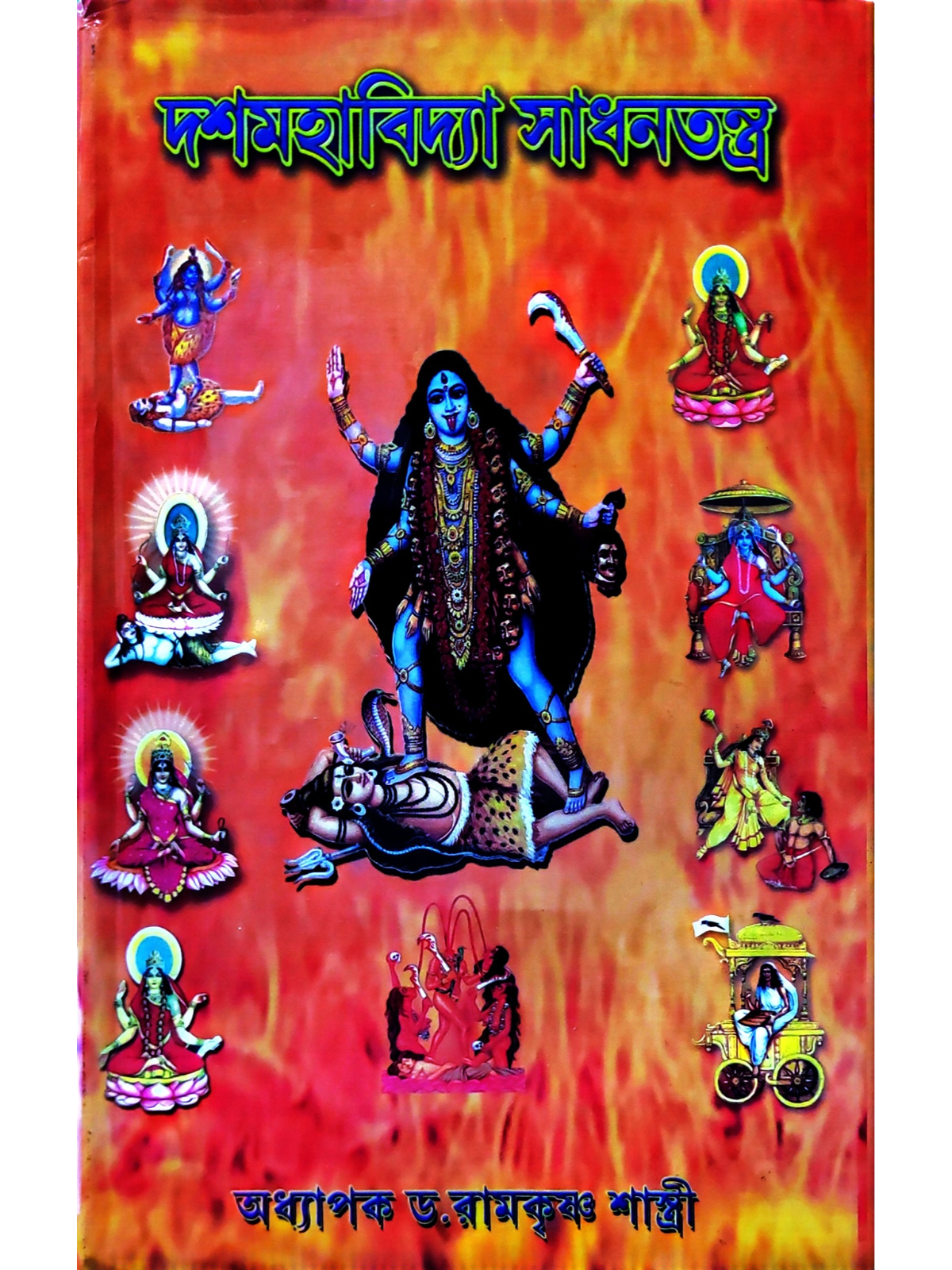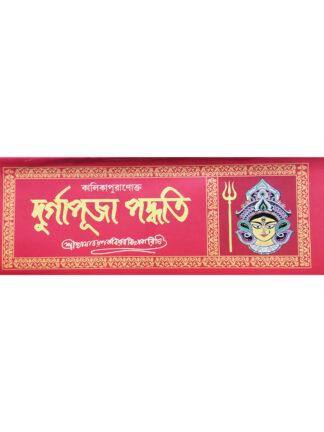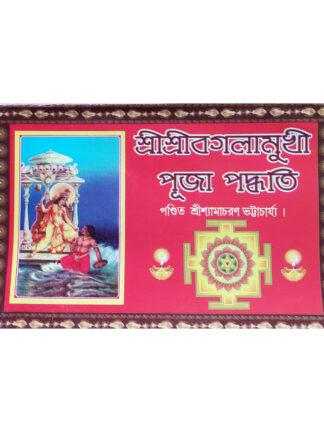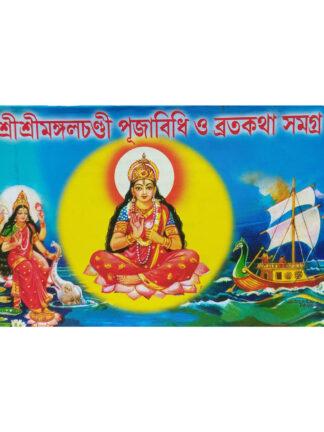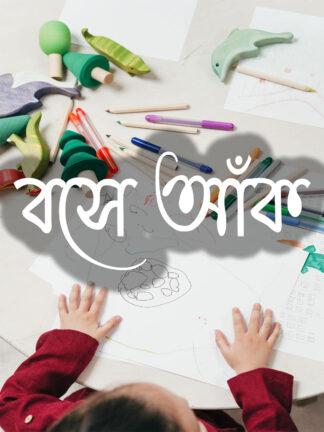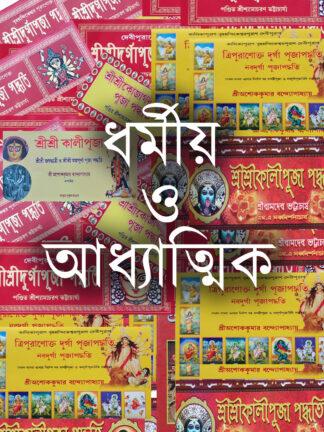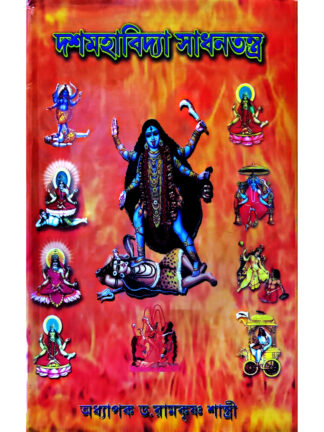Description
Buy Dasamahavidya Sadhan Tantra Book written by Dr Ramkrishna Shastri and published by Indian Institute of Oriental Heritage. Get a huge number of Book written by Dr Ramkrishna Shastri from our online book shop.
We have a tremendous collection of Books written by Dr Ramkrishna Shastri. Indian Institute of Oriental Heritage is a popular name in publication world. Almost all books published by Indian Institute of Oriental Heritage are available in our online store.
Dasamahavidya Sadhan Tantra is one of the bestselling books. If you are searching Dasamahavidya Sadhan Tantra then you are at right place. You can buy Dasamahavidya Sadhan Tantra at an affordable price.
Exploring the Ten Forms of Devi in Dasamahavidya Sadhan Tantra
Welcome to our enlightening journey through the ten forms of Devi in Dasamahavidya Sadhan Tantra. In this blog series, we will dive deep into the ancient wisdom and practices associated with each goddess. From Mahavidya Kali’s fierce energy to Mahavidya Kamala’s abundance and grace, each form of Devi offers a unique path towards fulfillment and spiritual growth.
Throughout this exploration, we will shed light on the rituals and practices that connect us to these powerful energies. By understanding their significance and incorporating them into our lives, we can unlock hidden potentials within ourselves and manifest our deepest desires. Whether it’s materialistic goals or seeking spiritual liberation, these devotional practices open doors for transformation.
Join us as we delve further into the realm of Dasamahavidya Sadhan Tantra! Through this intriguing journey, you’ll gain insight into the profound teachings embedded within each goddess archetype. Let us navigate this sacred path together as we discover how it can bring about profound changes in our lives and lead us towards ultimate enlightenment.
Brief overview of Dasamahavidya Sadhan Tantra
Dasamahavidya Sadhan Tantra is a powerful and ancient spiritual practice that delves into the ten forms of the Divine Mother, known as Mahavidyas. These Mahavidyas represent different aspects of the supreme feminine energy, each with their unique qualities and symbolism.
In this sacred tantra, practitioners explore the depths of spirituality and tap into divine wisdom through rituals, mantra chanting, meditation, and other practices associated with each Goddess. The ultimate goal is to achieve spiritual growth and enlightenment while simultaneously fulfilling materialistic desires.
Each form of Devi in Dasamahavidya Sadhan Tantra has its own rituals and practices that are specifically designed to connect with her energy. From worshipping Kali to meditating on Tara’s compassionate nature or invoking Lalita’s blissful presence – there are various methods to establish a deep connection with these cosmic forces.
By engaging in these sadhana (spiritual discipline) practices, individuals can experience profound transformations within themselves. They can find fulfillment in their worldly desires as well as gain insight into their true purpose in life. Moreover, by embracing these goddess energies through regular sadhana sessions, one can attain inner peace and guidance on their path towards self-realization.
Dasamahavidya Sadhan Tantra offers an incredible opportunity for seekers to dive deep into the realms of spirituality while helping them navigate through life’s challenges. It empowers individuals to harness both material abundance and spiritual liberation under the loving guidance of the ten forms of Devi. So if you feel drawn towards this mystical journey or wish to explore deeper dimensions of your existence – seek guidance from knowledgeable mentors who can help you embark on this transformative path!
Mahavidya Kali
Mahavidya Kali is one of the ten powerful forms of Devi in Dasamahavidya Sadhan Tantra. She embodies the fierce and transformative energy of the Divine Mother. Kali is often depicted with a terrifying appearance, adorned with skulls and holding weapons in her multiple hands.
She represents destruction and liberation from ignorance, helping devotees overcome obstacles on their spiritual path. Kali’s worship involves intense rituals and practices to invoke her presence and tap into her immense power. Through devotion, meditation, mantra chanting, and offering sacrifices, seekers seek to connect with Kali’s primal energy.
By embracing Mahavidya Kali’s teachings and incorporating them into our lives, we can learn to confront our fears head-on, let go of attachments that hold us back, and embrace change as a catalyst for growth. Her guidance can help us release negative patterns or behaviors that hinder our progress towards self-realization.
Remember that this brief overview only scratches the surface of what Mahavidya Kali offers in Dasamahavidya Sadhan Tantra. To truly explore her depths as well as those of the other nine goddesses in this ancient tantric tradition requires guidance from an experienced practitioner or guru who can provide proper instruction tailored to individual needs.
Mahavidya Tara
Mahavidya Tara is one of the ten forms of Devi in Dasamahavidya Sadhan Tantra. She embodies the divine feminine energy and represents compassion, courage, and liberation. With her radiant green complexion and benevolent expression, Tara is known as the “Savior” or “Star Goddess.”
Tara’s name translates to “star,” symbolizing her ability to guide devotees through darkness towards enlightenment. She is often depicted standing on a lotus flower with one foot resting on Lord Shiva, signifying their harmonious union of masculine and feminine energies.
Devotees who connect with Mahavidya Tara can experience her transformative powers to overcome fear, obstacles, and negative influences in their lives. Through dedicated sadhana (spiritual practice), practitioners seek her blessings for protection, wisdom, and spiritual growth. The rituals associated with Tara involve chanting mantras specific to her form while visualizing her divine presence.
Mahavidya Lalita
Mahavidya Lalita is one of the ten powerful forms of Devi in Dasamahavidya Sadhan Tantra. She is known as the Goddess of beauty and desire, representing the divine feminine energy at its most captivating. Lalita embodies grace, charm, and sensuality, drawing devotees towards her with irresistible allure.
As a tantric deity, Mahavidya Lalita guides practitioners on a path of self-discovery and spiritual growth. Her worship involves intricate rituals and practices that focus on cultivating inner beauty and embracing earthly desires without attachment. Through devotion to Lalita, seekers learn to balance their materialistic aspirations with spiritual enlightenment.
Lalita’s blessings are not limited to physical attractiveness or worldly success alone; she also bestows inner peace, harmony, and fulfillment in relationships. By immersing oneself in her divine presence through meditative practices and mantras chanting, one can tap into her transformative energies. The connection with Mahavidya Lalita empowers individuals to explore their true selves while navigating the realms of love, passion, creativity, and compassion.
Unlocking the mysteries of Mahavidya Lalita requires guidance from experienced practitioners or gurus who have delved deep into Dasamahavidya Sadhan Tantra. They can provide insights into rituals specific to invoking her essence for personal empowerment. Embracing this form of Devi allows us to embrace our desires consciously while progressing on our spiritual journey towards self-realization.
Mahavidya Bhuvaneswari
Mahavidya Bhuvaneswari, the fourth form of Devi in Dasamahavidya Sadhan Tantra, embodies the power and grace of the universe. She is often depicted as seated on a lotus, symbolizing her divine presence amidst creation. Bhuvaneswari represents the ultimate cosmic mother, nurturing and protecting all beings.
As we explore the significance of Mahavidya Bhuvaneswari in our spiritual journey, we tap into her energy to bring balance and harmony to our lives. Her blessings empower us to overcome obstacles and manifest abundance in every aspect. By connecting with her through meditation or rituals, we open ourselves up to receive her wisdom and guidance.
In embracing Mahavidya Bhuvaneswari’s teachings, we learn to honor and respect all forms of life around us. We cultivate gratitude for Mother Earth’s bountiful gifts and strive to live in harmony with nature. Through this connection with Bhuvaneswari’s energy, we can experience a deeper sense of purpose and fulfillment in both our spiritual practice and daily lives.
Mahavidya Tripura Bhairavi
Mahavidya Tripura Bhairavi is one of the ten forms of Devi in Dasamahavidya Sadhan Tantra. She is a fierce and powerful Goddess, often depicted with a third eye on her forehead. Known as the supreme goddess of speech and knowledge, she embodies wisdom and intellect.
In her form as Tripura Bhairavi, she symbolizes fearlessness and protection. With her guidance, devotees can overcome their fears and obstacles in life. She empowers individuals to face challenges head-on and emerge victorious.
Devotees who seek the blessings of Mahavidya Tripura Bhairavi often engage in specific rituals to invoke her presence. These practices may include mantra recitation, meditation, or performing yajnas (sacred fire ceremonies). Through these rituals, one can connect with the divine energy of Tripura Bhairavi and experience transformation on both an internal and external level.
The worship of Mahavidya Tripura Bhairavi not only helps individuals overcome their fears but also brings about spiritual growth. By surrendering to her divine grace, devotees can tap into their inner strength and discover their true potential. This journey towards self-realization is a profound experience that leads to enlightenment.
Mahavidya Chinnamasta
Mahavidya Chinnamasta is a fascinating form of Devi in the Dasamahavidya Sadhan Tantra. She is depicted as a severed-headed goddess holding her own head in one hand and wielding a sword in another. This powerful image symbolizes self-sacrifice, detachment from the ego, and liberation from worldly attachments.
Chinnamasta is known as the goddess of transformation and represents the power to transcend limitations. Her worship involves intense rituals that focus on overcoming desires and attaining spiritual enlightenment. By meditating on Chinnamasta, practitioners aim to channel their inner strength and let go of materialistic cravings.
The energy invoked through Chinnamasta’s sadhana can be both awe-inspiring and transformative. Through her grace, devotees seek to unleash their true potential by transcending physical boundaries and embracing spiritual growth. The practice of Mahavidya Chinnamasta encourages individuals to confront their fears, detach from external influences, and tap into their inner power for self-realization.
Remember that this brief description only scratches the surface when it comes to understanding Mahavidya Chinnamasta’s vast significance within Dasamahavidya Sadhan Tantra!
Mahavidya Dhumavati
Mahavidya Dhumavati is one of the ten powerful forms of Devi in Dasamahavidya Sadhan Tantra. She is often depicted as a widow, dressed in tattered clothes, carrying a broom and riding on a crow. With her fierce appearance, she represents the aspect of life that is associated with sorrow, loss, and transformation.
Dhumavati is known as the Goddess who brings forth darkness and destruction. But don’t be mistaken – her energy holds immense power for those seeking liberation from worldly attachments. Through embracing our own shadows and confronting our deepest fears, we can find inner strength and resilience.
The practice of worshipping Dhumavati involves letting go of material desires to attain spiritual growth. It requires surrendering to the void and accepting the impermanence of life. By invoking her energy through meditation or rituals, individuals can tap into their own inner wisdom and discover true contentment beyond superficial pleasures.
Note: Please note that these practices require guidance from an experienced practitioner or guru to ensure safety and authenticity in your spiritual journey with Mahavidya Dhumavati.
Mahavidya Baglamukhi
Mahavidya Baglamukhi is the eighth form of Devi in Dasamahavidya Sadhan Tantra. She represents the power to control and suppress enemies and negative forces. With her fierce appearance, holding a club and rope as her weapons, she symbolizes strength and victory.
Baglamukhi is known for her ability to paralyze opponents with just one glance. She can grant protection against evil eye, black magic, and any harm caused by enemies. Practitioners of Sadhan Tantra invoke her energy through specific rituals and practices to gain control over their adversaries.
By connecting with Mahavidya Baglamukhi, individuals can overcome obstacles in their lives and emerge victorious in battles both internal and external. Her energy helps in breaking free from negative influences that hold us back from reaching our full potential.
Embracing the power of Mahavidya Baglamukhi allows us to tap into our own inner strength, enabling us to confront challenges head-on with confidence. Her presence reminds us that we have the capability to conquer any opposition that comes our way.
Mahavidya Matangi
Mahavidya Matangi is the ninth form of Devi in Dasamahavidya Sadhan Tantra. She represents creativity, knowledge, and artistic expression. Matangi is known as the Goddess of speech and eloquence, empowering her devotees with the ability to communicate effectively.
In her depiction, Matangi appears green-skinned with a crescent moon adorning her forehead. She holds a veena (musical instrument) in one hand and gestures blessings with another. Matangi’s energy resonates through music, art, literature, and all forms of creative expression.
Devotees who seek the blessings of Mahavidya Matangi often engage in rituals involving chanting mantras dedicated to enhancing their artistic skills or improving their communication abilities. These practices help individuals tap into their inner creativity while also gaining clarity in expressing themselves effectively.
Matangi teaches us that artistry can be a spiritual practice if done with sincerity and devotion. By connecting to this aspect of Devi’s divine feminine energy, we can unlock our own hidden talents and bring forth our unique expressions into the world.
Mahavidya Kamala
Mahavidya Kamala, also known as Tripura Sundari, is one of the ten forms of Devi in Dasamahavidya Sadhan Tantra. She represents beauty, abundance, and prosperity. Kamala is depicted as a radiant goddess seated on a lotus flower, symbolizing purity and divine grace.
As the goddess of wealth and fertility, Kamala blesses her devotees with material abundance and success in their endeavors. Through her worship and sadhana practices, individuals can attract financial prosperity into their lives. By connecting with her energy, one can cultivate a mindset of gratitude and appreciation for the blessings that surround them.
In addition to bestowing material wealth, Mahavidya Kamala also offers spiritual growth through self-realization. Her devotees seek to attain inner peace and harmony by recognizing the divine presence within themselves and all beings. By embracing both the physical world and the spiritual realm simultaneously, one can find fulfillment in both materialistic desires (bhoga) as well as spiritual liberation (moksha).
Bhoga (Materialistic desires)
In the realm of Dasamahavidya Sadhan Tantra, one cannot overlook the significance of Bhoga, which represents our materialistic desires. We live in a world where we constantly strive for wealth, success, and fulfilling our earthly cravings. Bhoga teaches us that it is not wrong to desire these things; rather, it reminds us to strike a balance between worldly pleasures and spiritual growth.
Indulging in materialistic desires without any restraint can lead us astray from the path of enlightenment. However, completely suppressing these desires may also hinder our ability to experience joy and happiness in life. The practice of Sadhan Tantra allows us to explore and understand our cravings on a deeper level while maintaining control over them.
By acknowledging and addressing our materialistic desires through the ten forms of Devi in Dasamahavidya Sadhan Tantra, we gain valuable insights into ourselves and learn how to use these desires as catalysts for personal growth. Through rituals and practices associated with each Goddess, we develop discipline, self-awareness, and gratitude for both the physical and spiritual aspects of life.
The journey towards fulfillment lies not only in achieving external success but also in finding inner contentment amidst all worldly pursuits. With Bhoga as an integral part of Dasamahavidya Sadhan Tantra practice, we are encouraged to embrace our materialistic desires while simultaneously seeking spiritual enlightenment – a delicate yet transformative balancing act worth exploring further!
Moksha (Spiritual liberation)
Moksha, the ultimate goal of spiritual seekers, represents the liberation from the cycle of birth and death. It is a state where one attains union with the divine consciousness and experiences eternal bliss. In Dasamahavidya Sadhan Tantra, Moksha is sought through deep meditation and self-realization.
By practicing the sadhana of each Mahavidya goddess, one gradually transcends their ego and worldly attachments. The journey towards Moksha involves shedding layers of ignorance and delusion to uncover one’s true nature as pure consciousness.
Through dedicated practice and surrendering to the divine energy embodied by each Devi, practitioners can experience profound transformation on their spiritual path. Each Mahavidya holds unique teachings that guide individuals towards self-discovery and awakening.
Embracing Moksha requires discipline, perseverance, and a genuine yearning for spiritual growth. It is not an easy path but offers immeasurable rewards in terms of inner peace, wisdom, and freedom from suffering. May you embark on this sacred journey with reverence and find yourself liberated in the loving embrace of the Divine Mother!
Rituals and practices associated with each Goddess
Rituals and practices associated with each Goddess vary in the Dasamahavidya Sadhan Tantra. Each form of Devi has her own unique set of rituals and practices that devotees can engage in to connect with her divine energy. These rituals often involve offering prayers, performing specific mantras or chants, and conducting elaborate ceremonies.
For Mahavidya Kali, devotees may perform intense meditation practices while reciting powerful mantras to invoke her fierce energy. Tara is worshipped through the practice of deep meditation and chanting her mantra for protection and liberation from suffering. Lalita’s worship involves elaborate rituals using a yantra (sacred geometric diagram) along with chanting specific mantras.
Bhuvaneswari’s worship focuses on meditation to attain spiritual enlightenment and inner peace. Tripura Bhairavi devotees may engage in rigorous tantric practices including visualization techniques and recitation of sacred texts. Chinnamasta’s worship includes fasting and performing special pujas (ritualistic offerings) as a symbol of sacrifice.
Dhumavati is worshipped through the practice of austerity, renunciation, and contemplation on the transient nature of life. Baglamukhi’s worship involves mantra repetition for gaining victory over enemies or obstacles. Matangi’s worship incorporates musical offerings such as singing hymns or playing instruments like veena (a stringed instrument).
Kamala’s worship revolves around offering flowers, incense, fruits, and sweets as an expression of gratitude for abundance in all aspects of life. Each ritual associated with these goddesses carries its own significance within the broader framework of Dasamahavidya Sadhan Tantra.
Fulfillment of desires
Have you ever wished for something with all your heart? Something that would bring you joy, happiness, and fulfillment? In the realm of Dasamahavidya Sadhan Tantra, each form of Devi holds the power to grant your deepest desires. From Mahavidya Kali’s fierce energy to Mahavidya Matangi’s creative prowess, these goddesses embody different aspects of existence. Through dedicated rituals and practices associated with each deity, seekers can tap into their divine energy and manifest their desires into reality.
The path towards fulfillment begins by identifying our materialistic desires or bhoga. What are those things that we yearn for in this physical world? It could be wealth, success, love, or any other desire that fuels our ambitions. Each form of Devi guides us on a unique journey to attain these worldly pleasures while staying grounded in spiritual wisdom.
However, true fulfillment goes beyond mere materialistic desires. The Dasamahavidyas also offer a pathway towards moksha – spiritual liberation and enlightenment. By aligning ourselves with the higher cosmic energies represented by these goddesses, we embark on a transformative journey of self-discovery and inner growth. This quest leads us towards transcendence from the cycle of birth and death.
In exploring the ten forms of Devi in Dasamahavidya Sadhan Tantra, we uncover not only the means to fulfill our earthly wishes but also an opportunity for profound spiritual evolution. These powerful goddesses hold within them immense wisdom and compassion that can guide us towards living a more purposeful life filled with both material abundance and spiritual awakening.
Spiritual growth and enlightenment
Spiritual growth and enlightenment are the ultimate goals of any spiritual practice, including Dasamahavidya Sadhan Tantra. As we explore the ten forms of Devi in this ancient tantric tradition, we embark on a journey towards deepening our connection with the divine and expanding our consciousness.
Through dedicated sadhana and rituals associated with each Mahavidya Goddess, practitioners can experience profound inner transformation. The practices help purify the mind, awaken dormant energies within us, and remove obstacles that hinder our spiritual progress.
By delving into the intricacies of Dasamahavidya Sadhan Tantra, we open ourselves up to receive divine grace and guidance. With continued devotion and discipline, we tap into higher realms of existence where true realization occurs. This path leads to self-discovery, inner peace, and a heightened sense of awareness.
As we navigate through this mystical realm guided by the ten forms of Devi, we go beyond mere material desires or immediate gratification. Instead, our focus shifts towards attaining liberation from worldly attachments and experiencing union with the Divine Self – a state known as moksha.
Remember that exploring these sacred practices requires sincere dedication and proper guidance from experienced teachers or gurus who can offer invaluable insights along this transformative journey.
Recap of the ten forms of Devi in Dasamahavidya Sadhan Tantra
The Dasamahavidya Sadhan Tantra is a profound spiritual practice that delves into the ten forms of Devi, each representing a unique aspect of divine energy. These powerful Goddesses guide practitioners on their path towards both material fulfillment and spiritual enlightenment.
Mahavidya Kali embodies fierce determination and destruction of ego, while Mahavidya Tara offers protection and guidance in navigating life’s challenges. Mahavidya Lalita represents beauty and grace, inspiring devotion and love.
Mahavidya Bhuvaneswari grants wisdom and knowledge, while Mahavidya Tripura Bhairavi empowers seekers to overcome fear and obstacles. The awe-inspiring form of Chinnamasta symbolizes self-sacrifice for transformation, while Dhumavati teaches detachment from worldly desires.
Mahavidya Baglamukhi bestows power to silence negativity, Matangi enhances creativity through sound vibrations, while Kamala blesses with abundance and prosperity.
Each form has its own rituals and practices associated with it. By connecting with these Goddesses through meditation, mantra recitation, or other methods prescribed in the Sadhan Tantra tradition, one can experience their immense blessings firsthand.
Through this sacred practice comes the fulfillment of desires – be it wealth or success – as well as deep spiritual growth leading to ultimate liberation (Moksha). It is important to note that practicing Dasamahavidya Sadhan Tantra requires proper guidance from an experienced teacher or Guru who can provide detailed instructions tailored to individual needs.
In conclusion (as per your request), reflecting upon the ten forms of Devi in Dasamahavidya Sadhan Tantra gives us a glimpse into the vastness of divine energy available for exploration within ourselves. Each Goddess represents a different facet that we can tap into for personal growth and transformation. To truly delve deeper into this mystical path, seeking guidance from an authentic source is vital for a meaningful journey towards self-realization.
Encouragement to explore further and seek guidance in practicing Sadhan Tantra
The world of Dasamahavidya Sadhan Tantra is vast and profound, offering a transformative journey for those who are willing to embark upon it. As we have explored the ten powerful forms of Devi in this ancient practice, we have witnessed their immense potential in fulfilling our desires and guiding us towards spiritual growth.
However, it is important to remember that delving into the realm of Dasamahavidya Sadhan Tantra requires utmost reverence, dedication, and guidance from an experienced practitioner or guru. The intricacies of these practices should not be taken lightly or approached without proper understanding.
Therefore, if you find yourself intrigued by the mystique surrounding Dasamahavidya Sadhan Tantra, I encourage you to seek out authentic sources of knowledge and guidance. Connect with knowledgeable practitioners who can help navigate the complexities involved in harnessing the energies of these divine goddesses.
Remember that exploring this path goes beyond mere curiosity or materialistic desires; it is a quest for self-discovery and spiritual enlightenment. It demands sincere devotion, discipline, and a willingness to surrender oneself to the divine energy flowing through each form of Devi.
By seeking guidance from an experienced practitioner or guru, you will gain insights into ancient rituals and practices associated with each Mahavidya. They will teach you how to perform sadhana (spiritual practice) with purity of heart and mind while maintaining respect for the traditions passed down through generations.
Through dedicated sadhana under expert supervision, you may witness your desires being fulfilled but also experience profound inner transformation on your journey towards moksha (spiritual liberation). This process allows us to transcend mundane existence and embrace higher states of consciousness.
In conclusion—oops! Rather than concluding our exploration here today let’s consider this as just a beginning—an invitation—to dive deeper into the mystical world of Dasamahavidya Sadhan Tantra. Let this serve as a stepping stone towards understanding and embracing the transformative power of these
As we come to the end of our exploration into the ten forms of Devi in Dasamahavidya Sadhan Tantra, it is clear that this ancient practice holds immense potential for both personal growth and spiritual enlightenment. The journey through these Mahavidyas has revealed not only their individual powers and attributes but also their interconnectedness, forming a vibrant tapestry of divine energy.
Throughout our discussion, we have seen how each Goddess represents different aspects of existence and can assist us in fulfilling our desires or guiding us towards liberation. From Mahavidya Kali’s fierce determination to Mahavidya Kamala’s abundance and prosperity, these powerful deities offer multifaceted avenues for seekers to explore.
To fully understand and benefit from Dasamahavidya Sadhan Tantra, it is crucial to remember that these practices are deep-rooted traditions that require guidance from experienced practitioners. It is recommended to seek out qualified teachers who can provide proper initiation and steer you on the right path.
By delving deeper into this ancient wisdom with an open mind and sincere intention, you may unlock incredible transformative experiences within yourself. However, do approach your journey with respect, humility, and a willingness to surrender to the divine forces at play.
Remember that while materialistic desires (Bhoga) can be fulfilled by engaging with specific Mahavidyas according to one’s needs or aspirations; ultimately seeking Moksha (spiritual liberation) should be the ultimate goal. Through dedicated rituals and practices associated with each Goddess, one can gradually transcend mundane attachments towards higher states of consciousness.

